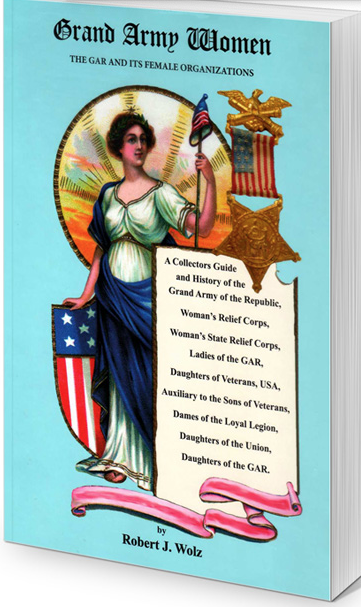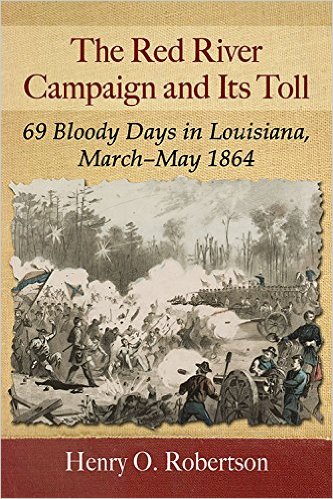Grand Army Women: The GAR and Its Female Organizations by Robert J. Wolz. Key West Publishing, LLC, 2020. Cloth, IBSN: 978-0-9778528-5-7. $39.95.
 As the largest fraternal order for Union veterans, the Grand Army of the Republic has invited much attention from historians. Stuart F. McConnell, Mary R. Dearing, and Barbara A. Gannon—among others—have considered the organization’s rituals, political activism, and attitudes toward race. Less well documented, however, have been the activities of the women’s auxiliaries—guilds like the Ladies of the GAR, the Daughters of Union Veterans, and the Woman’s Relief Corps—that supported the men and patriotic mission of the GAR. If less visible, northern women were no less engaged in the work of Civil War memory than their counterparts in the United Daughters of the Confederacy. They too sponsored essay contests, decorated veterans’ graves, and promoted their particular vision of the war’s history. And just as these women did during the war itself, they tended to the physical care and comfort of ailing and grizzled veterans.
As the largest fraternal order for Union veterans, the Grand Army of the Republic has invited much attention from historians. Stuart F. McConnell, Mary R. Dearing, and Barbara A. Gannon—among others—have considered the organization’s rituals, political activism, and attitudes toward race. Less well documented, however, have been the activities of the women’s auxiliaries—guilds like the Ladies of the GAR, the Daughters of Union Veterans, and the Woman’s Relief Corps—that supported the men and patriotic mission of the GAR. If less visible, northern women were no less engaged in the work of Civil War memory than their counterparts in the United Daughters of the Confederacy. They too sponsored essay contests, decorated veterans’ graves, and promoted their particular vision of the war’s history. And just as these women did during the war itself, they tended to the physical care and comfort of ailing and grizzled veterans.
Author Robert J. Wolz recalls the work of postwar northern women’s organizations in this handy reference volume, which doubles as a “collector’s guide to their badges and insignia” (vi). After relating the history, membership requirements, and animating concerns of these groups, Wolz catalogues the two- and three-dimensional objects—postal covers, paper ephemera, visiting cards, national encampment badges, pins, keepsakes, jewelry, ribbons, and sashes—that survive to document thier civic lives.
An especially convenient appendix documents the annual national convention sites for the Grand Army of the Republic, the Ladies of the GAR, the Sons of Union Veterans, and the Daughters of Union Veterans of the Civil War. Printed on thick, glossy pages, the book—a welcome companion to the author’s Grand Army Men: The GAR and Its Male Organizations [2014]—is amply illustrated by more than 500 carefully reproduced black-and-white and color photographs.
Though intended for collectors, this book will appeal to scholars as well. Recent scholarship on soldier foodways, homespun uniforms, battlefield trophies, and war relics have yielded new insights into the Civil War era, but the materiality of Civil War memory remains to be explored. Documenting the rich material culture of Union veterans, widows, and wives, Wolz’s superb guide provides an essential starting point for that project.
Further, it may be hoped that Grand Army Women will prompt historians to revisit these auxiliaries—and other kindred societies for lineal and collateral descendants of Union veterans—for what they reveal about the landscape of Civil War memory in the twentieth century.
Brian Matthew Jordan is the author of Marching Home: Union Veterans and Their Unending Civil War, which was a finalist for the Pulitzer Prize. His next book, A Thousand May Fall: Life, Death, and Survival in the Union Army, will be published by Liveright/W.W. Norton in January 2021.
